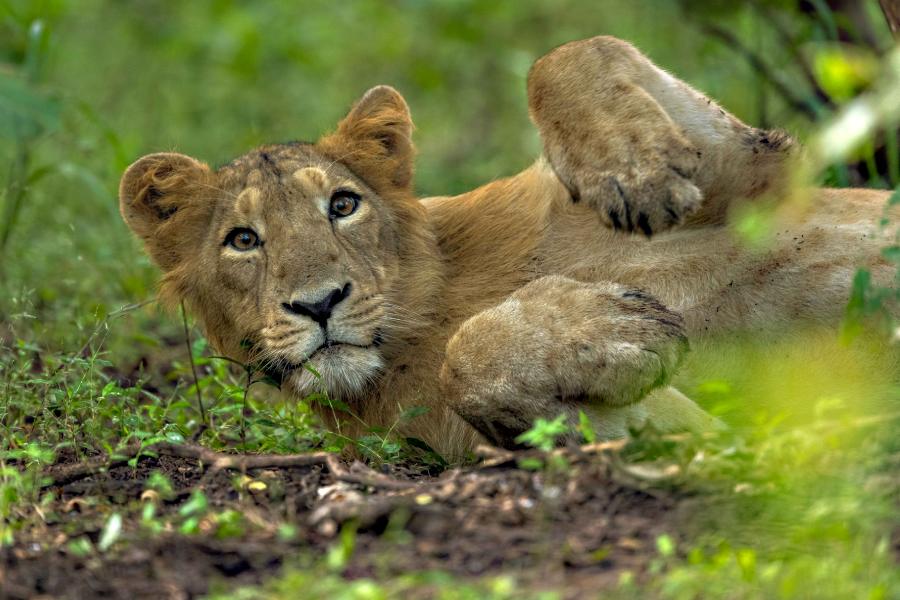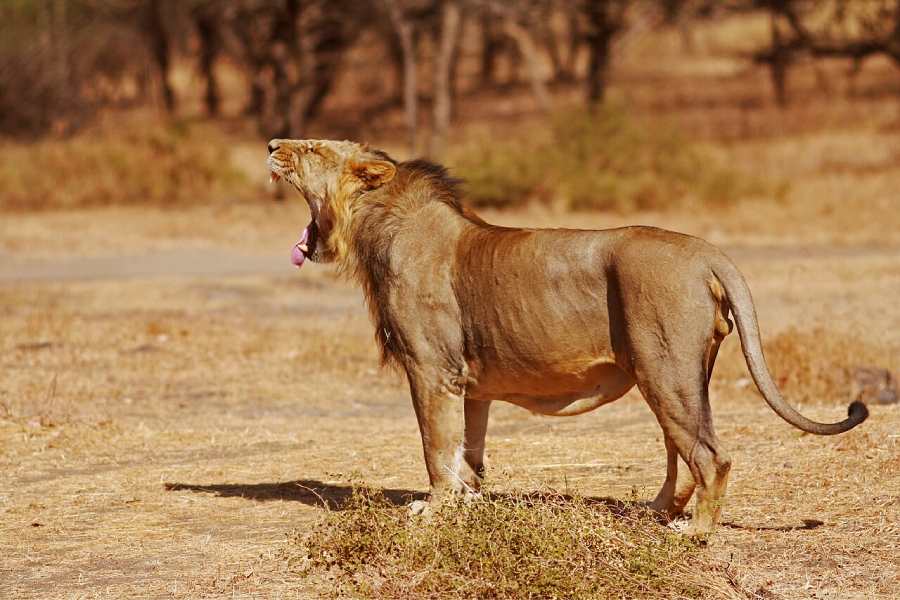On World Lion Day today, India marked a conservation milestone. The Asiatic lion population has risen from 674 in 2020 to 891 in 2025, a 32.2 per cent increase, according to the 16th Lion Population Estimation report released on Sunday.
The latest census, conducted in May this year, has identified new satellite populations in Barda Wildlife Sanctuary, Jetpur and adjoining areas, as well as Babra-Jasdan and neighbouring regions.
This takes the total number of lions in satellite populations to 497 across nine locations. For the first time, 22 lions have been documented in corridor areas.
Speaking at a state-level event in Gujarat’s Devbhumi Dwarka district to mark World Lion Day, Union Environment Minister Bhupender Yadav called the growth a sign of India’s “intimate relationship with nature and wildlife.”
“The growth of India's lion population since 1889 (when the last Asiatic lions were seen) shows our intimate relationship with nature and wildlife", Yadav said.
He credited the Maldhari community in Gir for living “with nature conservation” and cited Gir as “the best example of how humans can live intimately with lions.”
Yadav linked the achievement to broader conservation goals, referencing the International Big Cat Alliance, which aims to protect seven big cat species. “Humans are not superior, and lions do not exist because of us, but humans exist because of lions and nature,” he said.
Despite the population increase, the lion’s future remains precarious. Over the past five years, 669 Asiatic lions have died from causes ranging from old age and illness to electrocution, falls into open wells, and territorial fights.
The government has stated none of these deaths were due to poaching.
On March 27 this year, the International Union for Conservation of Nature (IUCN) released its first Green Status assessment for the lion (Panthera leo), classifying the species as “Largely Depleted.” The report warned that human impacts are preventing the lion from being fully ecologically functional across its range, with the species extinct from North Africa and Southwest Asia.
The IUCN’s designation highlighted that rising numbers alone do not eliminate threats such as habitat isolation, human-animal conflict, and the risk of disease outbreaks.
Experts have long warned that Gir’s geographical isolation as the only natural home of the Asiatic lion, makes it vulnerable to a single catastrophic event. The danger became clear in 2018, when the canine distemper virus (CDV) killed 27 lions and forced 37 more into quarantine.
The Supreme Court in 2013 ordered that some lions be relocated to Kuno National Park in Madhya Pradesh within six months. A decade later, the translocation has not happened.
Instead, Kuno has been populated with cheetahs.
The Gujarat government has promoted Barda Wildlife Sanctuary, about 100 km from Gir, as an alternative site. In 2022, the Centre confirmed Barda could support 40 adult and sub-adult lions.
However, Barda is still within Gujarat, meaning the entire population remains confined to a single state.
In recent years, the lions’ range has grown. Between 2015 and 2020, their distribution expanded from 22,000 sq km to 30,000 sq km.
In 2024 and 2025, some lions even swam across the narrow channel to Diu Island. The animals were relocated to Gujarat at the request of the Diu administration, which cited potential risks to human life. Conservationists questioned the move, saying it was unnecessary and reflected reluctance to let lions establish themselves beyond the traditional range.
The Gujarat government maintains that Gir has a sufficient prey base, and earlier this year Yadav reiterated this claim.
Yadav emphasised that Asiatic lions are found only in India and only in Gujarat, giving the state “100 per cent pride” in their conservation. But without breaking their isolation and establishing secure second homes outside Gujarat, a disease outbreak, prey collapse, or natural disaster could undo decades of gains, the IUCN has already warned before.
The IUCN’s “Largely Depleted” status serves as a reminder that population growth is only one part of ecological recovery.











